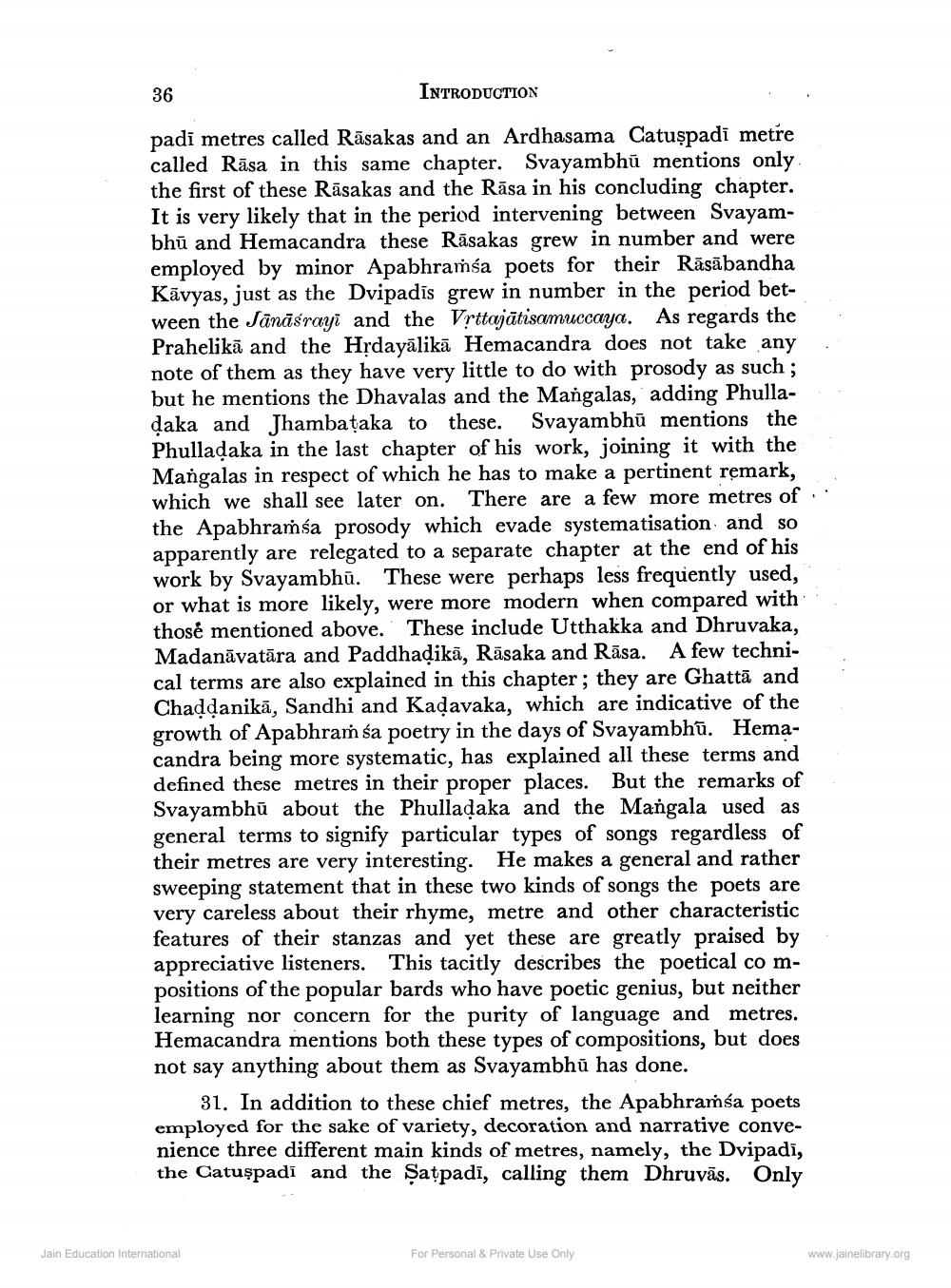________________
36
INTRODUCTION
padi metres called Rāsakas and an Ardhasama Catuspadi metre called Rāsa in this same chapter. Svayambhū mentions only the first of these Rāsakas and the Rāsa in his concluding chapter. It is very likely that in the period intervening between Svayambhū and Hemacandra these Rāsakas grew in number and were employed by minor Apabhramśa poets for their Rāsābandha Kāvyas, just as the Dvipadīs grew in number in the period between the Jānāsrayi and the Vșttajātisamuccaya. As regards the Prahelikā and the Hrdayālikā Hemacandra does not take any note of them as they have very little to do with prosody as such; but he mentions the Dhavalas and the Mangalas, adding Phulladaka and Jhambataka to these. Svayambhū mentions the Phulladaka in the last chapter of his work, joining it with the Mangalas in respect of which he has to make a pertinent remark, which we shall see later on. There are a few more metres of the Apabhraṁsa prosody which evade systematisation and so apparently are relegated to a separate chapter at the end of his work by Svayambhū. These were perhaps less frequently used, or what is more likely, were more modern when compared with those mentioned above. These include Utthakka and Dhruvaka, Madanăvatāra and Paddhadikā, Räsaka and Rāsa. A few technical terms are also explained in this chapter; they are Ghattā and Chaddanikā, Sandhi and Kadavaka, which are indicative of the growth of Apabhramśa poetry in the days of Svayambhū. Hemacandra being more systematic, has explained all these terms and defined these metres in their proper places. But the remarks of Svayambhū about the Phullaďaka and the Mangala used as general terms to signify particular types of songs regardless of their metres are very interesting. He makes a general and rather sweeping statement that in these two kinds of songs the poets are very careless about their rhyme, metre and other characteristic features of their stanzas and yet these are greatly praised by appreciative listeners. This tacitly describes the poetical co mpositions of the popular bards who have poetic genius, but neither learning nor concern for the purity of language and metres. Hemacandra mentions both these types of compositions, but does not say anything about them as Svayambhū has done.
31. In addition to these chief metres, the Apabhraṁsa poets employed for the sake of variety, decoration and narrative convenience three different main kinds of metres, namely, the Dvipadi, the Catuspadi and the Satpadi, calling them Dhruvās. Only
Jain Education International
For Personal & Private Use Only
www.jainelibrary.org




